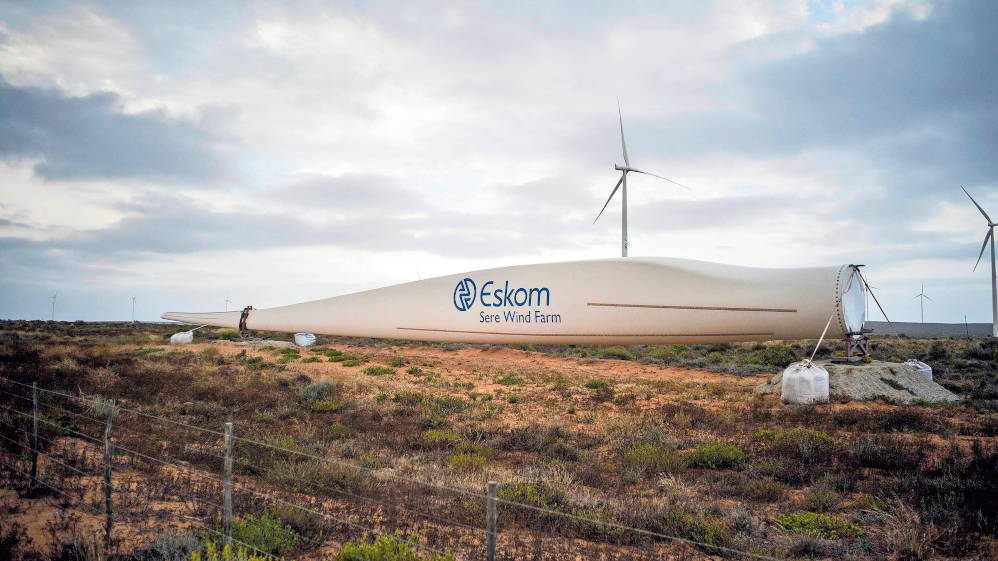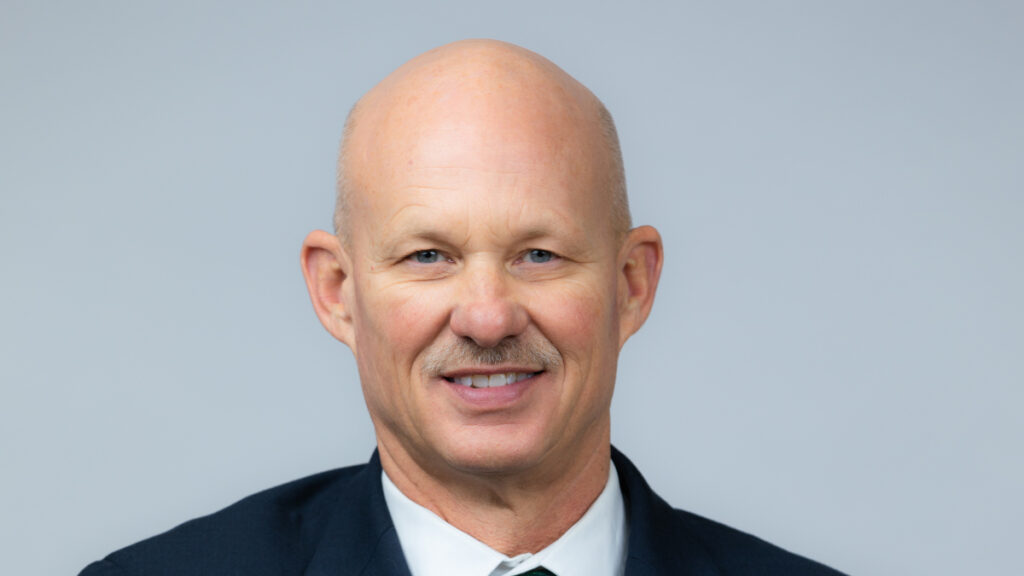Minister of Mineral Resources and Energy, Gwede Mantashe. File photo
Efforts made to increase renewable energy and decrease carbon footprint
President Cyril Ramaphosa recently announced a R45-billion investment into a project to address the country’s energy challenges.
“Resolving our energy challenges isn’t just urgent; it is fundamental to South Africa’s economic recovery. That is why we are making every effort to bring new power generation capacity online in the shortest possible time,” Ramaphosa wrote in his weekly presidential newsletter in March.
This was after Minister of Mineral Resources and Energy Gwede Mantashe announced the companies that had successfully bid to supply 2 000 megawatts of emergency power to address the gap in South Africa’s capacity.
Ramaphosa said the power will be produced from a range of sources including solar, wind, liquified natural gas and battery storage.
“These projects will involve an investment of around R45-billion by the private sector. Around half of all the materials used in the construction will be locally sourced. The projects should be providing power to the nation by August next year,” he said.
Government has released a request for proposals for the procurement of a further 2 600MW of renewable energy.
“This is the fifth ‘bid window’ in the country’s highly successful programme to buy renewable energy from independent power producers. This programme has led to significant private investment in the country’s energy infrastructure, and is an important part of our commitment to move towards cleaner energy sources,” Ramaphosa said.
The announcement is a positive step for a country faced with mounting energy and power challenges. South Africa, which marks Energy Month during May, is noted among the world’s least energy efficient nations.
According to the Government Communication Information Services the country uses approximately 40% of Africa’s electricity, and is the 11th-highest emitter of greenhouse gases in the world.
“Our national addiction to energy has led to the situation where our reserve margin is unsustainably low, and the reliability of our electricity supply is under threat. Our energy habits have adverse effects on our economy, our environment and our health.”

The transition to renewable energy, such as wind farms, is gathering momentum. (Photo: Rodger Bosch / AFP)
In his state of the nation address for 2021 in February, Ramaphosa announced that the government is working to fulfil its commitments under the United Nations Framework Convention on Climate Change and the Paris Agreement, which include the reduction of greenhouse gas emissions.
“Eskom, our largest greenhouse gas emitter, has committed in principle to net zero emission by 2050 and to increase its renewable capacity,” he said.
According to the United Nations, 789-million people – predominantly in sub-Saharan Africa – are living without access to electricity, and hundreds of millions more only have access to very limited or unreliable electricity.
“It is estimated that only 28% of health facilities have access to reliable electricity in sub-Saharan Africa, yet energy is critically needed to keep people connected at home and to run life-saving equipment in hospitals.”
The UN further notes that 13% of the global population still lacks access to modern electricity, with millions of people still relying on wood, coal, charcoal or animal waste for cooking and heating.
The generation of energy is cited as the dominant contributor to climate change, accounting for around 60% of total global greenhouse gas emissions. It is further noted that indoor air pollution from using combustible fuels for household energy caused 4.3-million deaths in 2012, with women and girls accounting for six out of every 10 of the fatalities.
The South Africa’s National Energy Efficiency campaign encourages all sectors of society to conquer their “energy addictions” and urges that by growing a culture of activism around energy savings, “we can take control of our energy situation and ensure a better future for all”.
In his budget vote speech for the 2021/22 financial year, Mantashe told parliament that the government will issue additional requests for proposals for the provision of 2 600MW from renewable energy and 513MW from storage by end August 2021.
Mantashe said the department will also issue requests for 1 500MW from coal, 3 000MW from gas in December this year and 1 600MW from renewable energy in January 2022.
“In line with the Sustainable Development Goal Seven of achieving universal access to affordable, reliable, sustainable and modern energy by 2030, we are forging ahead through our INEP (Integrated National Electrification Programme) programme, and as such we plan to connect 180 000 additional households in the 2021/22 fiscal year, following 166 886 households connected in 2020/21 financial year,” Mantashe added.
The UN recently reported on a commitment by Hawaii to generate 100% of its power using renewable energy by 2045. The debate around renewable energy continues here at home.

Reliable power is essential for growth (Photo: Waldo Swiegers/Bloomberg via Getty Images)
A 2003 White Paper on Renewable Energy laid the foundation for the promotion of renewable energy technologies such as solar, hydro, biomass and wind. The objectives of the White Paper on Renewable Energy of 2003 included ensuring that an equitable level of national resources was invested in renewable technologies; direct public resources to implementation of renewable energy technologies; introduction of suitable fiscal incentives for renewable energy and creating an investment climate for the development of the renewable energy sector.
According to the South African National Energy Development Institute (Sanedi), South Africa’s renewable energy sector experienced explosive growth, with investment of more than $5.5-billion in 2012.
This was up from $30-million in 2011, which represented an increase of 20,500%. According to Sanedi this rapid investment growth during that period made South Africa the ninth-leading destination for clean energy investment among the Group of 20 (G-20) of the world’s developed and emerging economies.
The department of minerals and energy’s Integrated Resource Plan (IRP 2010) which was promulgated in May 2011 has set a target of 17 800MW of renewable energy to be achieved by 2030 in respect of the electricity generation mix.
Government recently announced that ACWA Power has secured R11.6-billion in funding for the Redstone Concentrated Solar Power Plant in the Northern Cape.
“This plant is part of South Africa’s major infrastructure projects and the largest renewable energy investment in our country. Redstone plant is set to produce 100MW of renewable energy that is expected to be delivered at the end of 2023, and it will reliably deliver a stable electricity supply to more than 200 000 households,” government announced in a report on the outcomes of a cabinet meeting last week.
Mantashe has announced that the government is considering hydrogen energy “as one of the most plausible choices for alternative energy and as an energy-carrier, due to the abundance of element hydrogen on the planet”.
He said the government has established a research, development, and innovation strategy on hydrogen, known as Hydrogen South Africa (or HySA.) — Lucas Ledwaba
The energy and financial rewards of tailored renewable solutions
Leading multinational renewable energy provider Enel Green Power (EGP) offers tailored renewable energy solutions to commercial and industrial customers. The operation is enjoying significant success in South Africa, with eight projects in operation and four in construction as part of the country’s Renewable Energy Independent Power Producer Procurement (REIPPP) Programme bid windows 2 to 4.

William Price, Country Manager of Enel Green Power South Africa
EGP’s commercial offering is to assist businesses in the commercial and industrial achieve their sustainability goals. This is on the back of businesses seeking to reduce their carbon footprints while satisfying the need for a stable supply of energy.
The upside of IPP partnership
While South African industries have been hard hit by irregular energy supply and load-shedding, a joint development partnership with an Independent Power Producer (IPP) through a Power Purchase Agreement (PPA) allows commercial and industrial (C&I) customers to maintain security of supply and avoid the negative impacts of ever-increasing electricity tariffs and costly operational downtime.
Procurement of renewable energy on a long-term PPA arrangement allows C&I customers greater financial planning through tariff certainty, as well as the reduction of operational risks associated with energy tariff fluctuations and increases. Further, it drives customer sustainability goals, particularly for those enterprises that have committed to the global corporate renewable energy initiative pledge of being 100% renewable by a certain date.
Choosing the right long-term partner
EGP’s proven track record is bolstered by its integrated model, which includes the development and implementation of solutions, access to various financing options, engineering excellence and consistent attention to operations and maintenance.
Further, EGP’s extensive experience in South Africa means it understands the market and requirements of its customers. The business is committed to community upliftment and value creation through its creating shared value initiatives, apparent in the communities it operates in. The latter is particularly important, given the requirements of large commercial and industrial enterprises to only partner with suppliers that meet BBBEE standards.
Where EGP plugs in
EGP believes that the opportunities for large commercial and industrial energy users to reap the rewards of renewable energy supply are starting to open up, largely due to the integrated resource plan and expected favorable regulatory changes, thereby paving the way for mining, industrial and manufacturing operations to implement self-generation energy solutions.
EGP provides both on-site and off-site generation solutions, with the former involving an energy-generating solution on the customer’s site, given adequate space and the location of the customer’s operations. Referred to as a behind-the-meter project, this involves EGP’s solutions connecting directly to the customers interconnection equipment.
An offsite solution allows for energy to be delivered to the customer via the grid. This is the ideal solution for operations that have location and space constraints, and enables the power to be delivered to the project’s multiple off-takers.
EGP’s global expertise and trust is apparent in its recent power purchase agreement (PPA) signings with global brewer AB InBev, and multinational confectionery company Mondelez International, which are both advancing the sustainability conversation by promoting EGP’s products and approach to operating.
For more information on EGP’s renewable energy solutions, kindly visit www.enelgreenpower.com